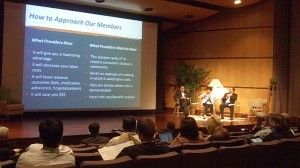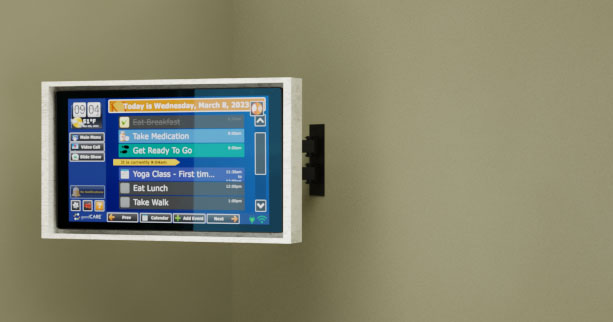Aging Baby Boomers Drawing Attention to Health Monitoring Tools – Ihealth Beat
Read an article from HealthyCal in ihealth beat the other day on the lack of awareness of Technology from the aging boomer perspective!
I agree with Lynn Reddington from the article – – the awareness that such technology even exists as a piece of the puzzle is not there. The numbers that Douglas provides in the article are astounding, the cost of technology as a supplement to hands-on care should be a no brainer. What we need is for the media, home health care providers and medical care providers to promote the use of technology to help provide ultimate care.
 GrandCare technology has helped families to keep a loved one at home, independent and safe, while giving them a new window into the virtual world (SKYPE, email, online games, weather/news, videos, music, etc.). Why shouldn’t our aging population be able to experience all of the wonderful things that the Internet provides for us every day? Thanks for the article HealthyCal and keep spreading the word!
GrandCare technology has helped families to keep a loved one at home, independent and safe, while giving them a new window into the virtual world (SKYPE, email, online games, weather/news, videos, music, etc.). Why shouldn’t our aging population be able to experience all of the wonderful things that the Internet provides for us every day? Thanks for the article HealthyCal and keep spreading the word!
Monday, July 11, 2011 ![]()
 Aging Baby Boomers Drawing Attention to Health Monitoring Tools
Aging Baby Boomers Drawing Attention to Health Monitoring Tools
As baby boomers age, more companies are creating remote health monitoring and telemedicine devices to help elderly residents remain in their homes, but the public and physicians are not widely aware of such tools, HealthyCal reports.
Details of the Devices
Homes and assisted living facilities are being equipped with new technology designed to cut medical costs and comfort patients.
Such devices are aimed at:
- Coordinating care among health care providers;
- Improving cognitive function using “brain fitness” programs;
- Monitoring chronic disease;
- Providing early detection of illness; and
- Reminding seniors to take their medication.
Steps Taken by Industry and Education
General Electric and Intel recently formed a joint venture to develop new health care tools. Among other products, the joint firm offers tools that track vital signs and patient movement.
In addition, the University of California-Davis Medical Center is scheduled to open a Telehealth Resource Center next summer. The center will be used to train medical professionals on how to use home telehealth technologies, according to Thomas Nesbitt, associate vice chancellor for strategic technologies and alliances at UC-Davis.
Challenges, Benefits of the Tools
Despite the growing interest in remote monitoring tools, several hurdles exist for seniors who want to use the devices. For example:
- Medicare and private insurers typically do not cover the costs of devices;
- Most family physicians are not technologically knowledgeable enough to promote the devices; and
- Patients could be harmed by the systems in some cases if they fail to work properly.
In addition, a lack of awareness of such tools exists.
Lynn Redington — senior program director for the Center for Technology and Aging — said, “We find the awareness level of telehealth solutions is pretty low.”
Even so, observers say the lower cost of care associated with using the devices can be beneficial to family and state budgets.
Douglas Busch of Intel estimated that the cost to provide care to aging adults at home is about $10 per day, compared with $10,000 per day at an intensive care unit.
Remote monitoring devices also can help ease transportation problems and the need for family members to take time off work to provide care (Perry, HealthyCal, 7/10).









